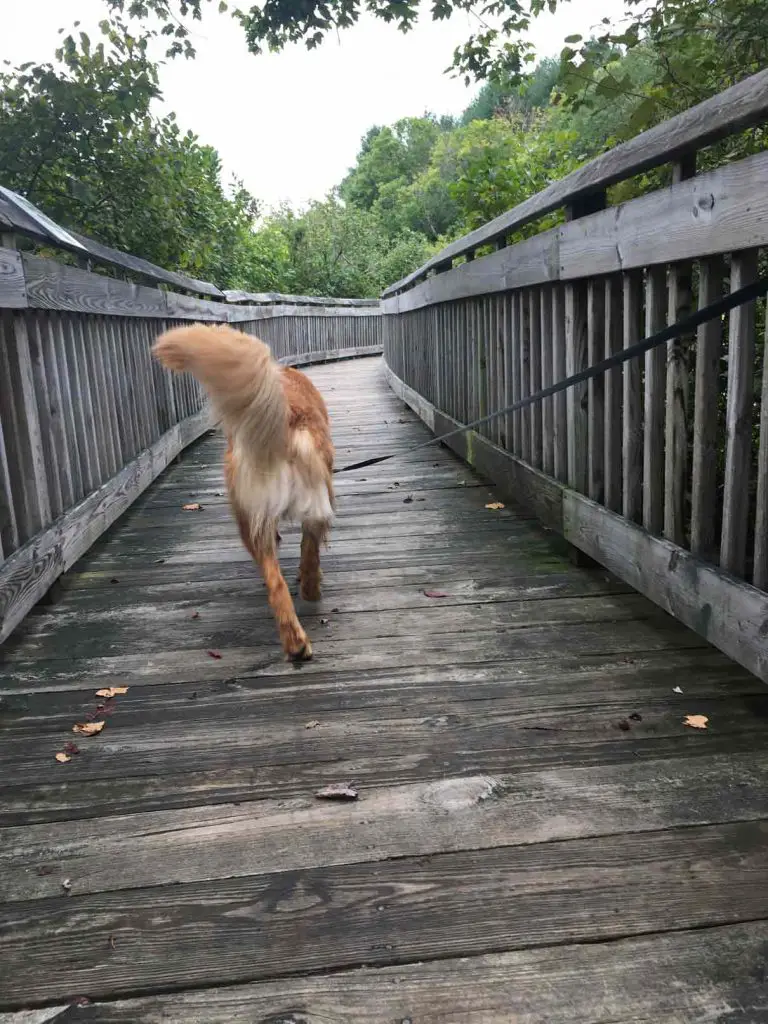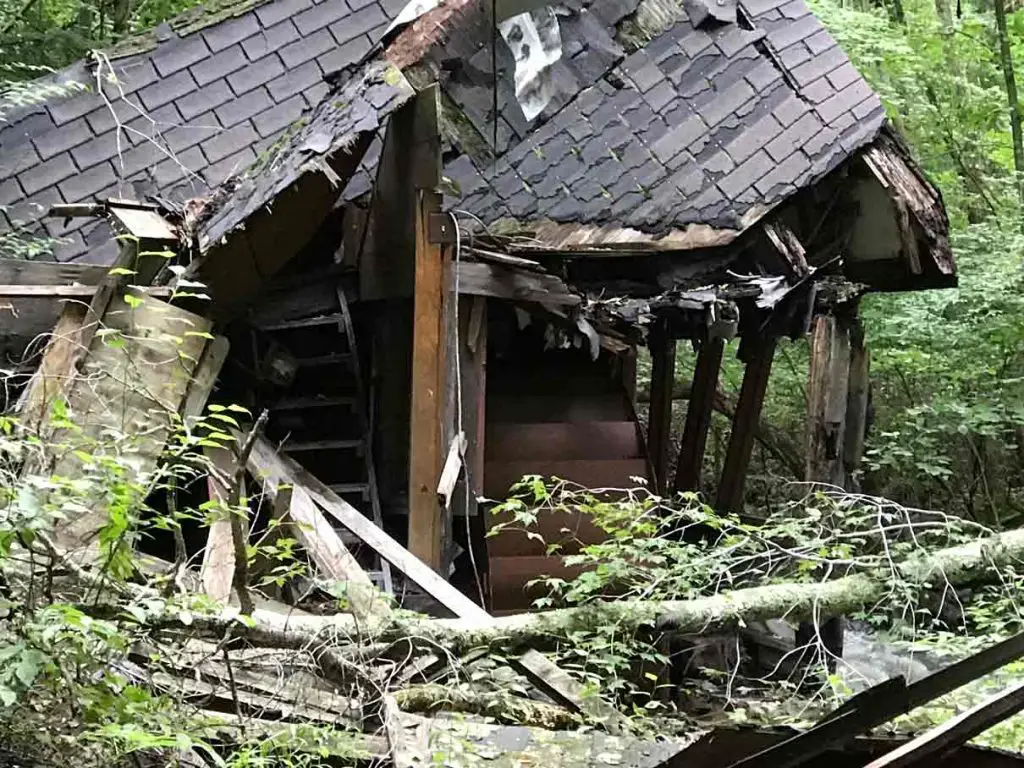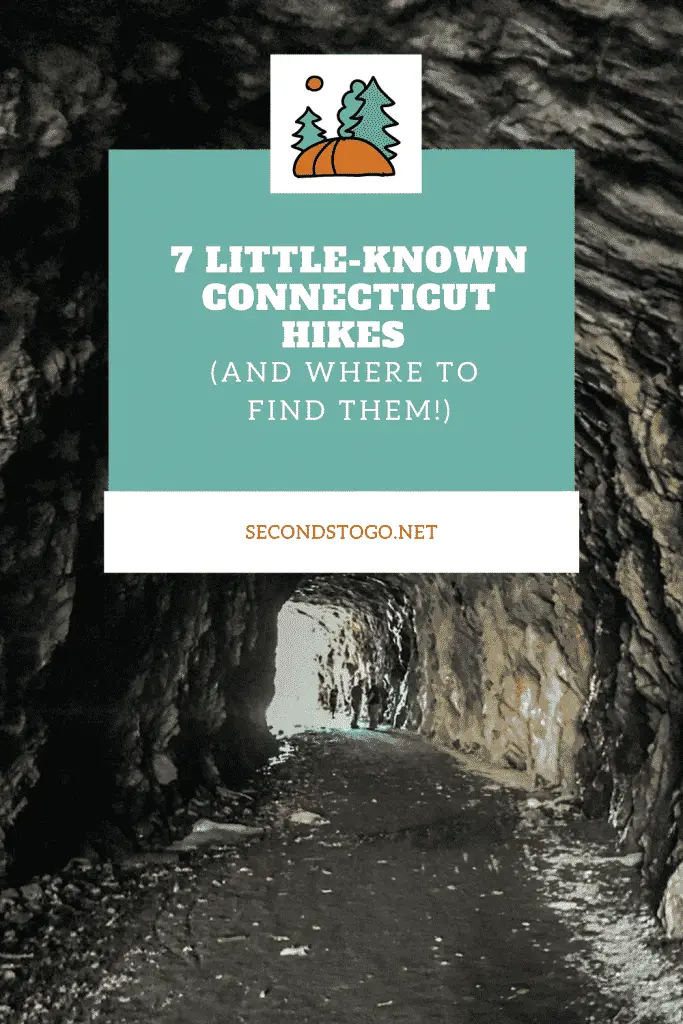
Chatfield Hollow State Park in Connecticut, with water wheels and trails that lead to old mill ruins, is a must visit Connecticut state park. Plus like so many things in New England, it offers something for all ages.
Preparing to Visit Chatfield Hollow State Park
Before even starting the car to drive to Chatfield Hollow State Park, we were knee-deep in a mystery.
We’d found information about an off-the-beaten-path Connecticut state park that ordinary citizens were not allowed to use. The hint of restriction, combined with the history of the Chatfield Hollow State Park, definitely was an enticing incentive to visit the spot.
Chatfield Hollow is a heavily used Connecticut state park, well recognized for its contributions from the Civilian Conservation Corp (CCC), but right across the street is a “state park” that is not available to the general public.
On the other side of Route 80, sits Forster State Park, a Connecticut State Park with signs warning anyone trying to access it, not to trespass. On the property is a manmade lake, many buildings, including the family mansion of a renowned architect, as well as the town’s first power plant, a hydroelectric dam.
In the 1930’s famed architect Frank Forster acquired the land off of Route 80 and began construction on the buildings as well as the large pond. Frank passed away in 1948 but was survived by his wife Mary.
In the 1960’s Mary decided to strike up a deal with the state to keep her husband’s legacy and property alive for future generations. The state purchased the land for $125,000 and Mary lived out her days in the grand house her husband designed and built.
In the 1970’s, the state purchased the 41 acres next to the Forster piece that contained the water wheel power plant. In the 1980’s the state entered into a legal battle with the property’s caretaker, who refused to vacate following Mary Forster’s death in 1980. He stated that in her final days, Mary was unhappy with the deal the state had made with her and wanted to change the deal.
However, once the legal issues were sorted out, the state of Connecticut gained full access to the property and began renting out two of the houses to forestry employees. The Connecticut state park was not opened to the public except for a small program allowing special needs children to fish on the pond occasionally.
Today, things have not changed. The Forster property is still closed to the public, inciting outrage within the small group of people who know of the state parcel’s existence. In 2012, a few of the historic outbuildings and one cottage were demolished. In 2014, a campaign was started to save the historic buildings with Jeffrey Bradley, Director of Resident Curator Training, calling on then governer, Dannel Malloy to “personally view one of the most pristing places in the entire Connecticut park system”. The intent: to incentivize a movement that would restore the historic work of one of Connecticut’s “first green architects”.
Today these buildings still stand in ruins, with only the 2 main houses being maintained by the state.
Our visit to Chatfield Hollow State Park
We began our visit by driving up to the entrance of Forster State Park. We didn’t get far before a locked gate and no trespassing signs barred the way. This, despite the fact that a primary portion of the Chatfield Trail passes through the property. More on that later. For now, we crossed the street and entered the open Chatfield Hollow State Park.
Here we found a stone-lined pond surrounded by greenery and adorned with a rustic wooden water wheel, remnant from an early gristmill owned and operated by the Chatfield brothers. After wrangling our golden retriever, Nemo, back out of the water, we spent some time exploring the stone sluice way and the water wheel, pretty impressive structures in their own right.
Being that we wanted to see the rest of the infrastructure of the park, we headed to the large pond on the property. In 1934, the Civilian Conservation Corp (CCC) built the earth and stone dam at the 7-acre Schreeder Pond turning the Connecticut State Park into a top destination for state residents. Be advised that work was commencing in this area of the park at time of writing, with hopes for completion by summer of 2024.
It’s peaceful and serene in the fall but is a bustling place in the warm summer months. Park benches surrounding the water invite relaxation and peaceful viewing. You’ll also find a boardwalk that leads into the adjacent wetlands area and a small nature center in a historic building.

Hiking at Chatfield Hollow State Park
Branching off from the pond, are hiking trails that seem to lead off in every direction. Although we visited on a weekday, we saw many groups of people heading out on hikes. I can imagine based on the park map, you could spend all day winding your way through the immense hiking trails.

Chatfield Hollow State Park features six main trails that wind through various terrain, including a historic Native American foot trail. One picturesque hike in particular, begins with a bright red covered walkway bridge, while another starts off in dense tall trees. Additional trails take off from the eastern park boundary and traverse the adjacent Cockaponset State Forest.
With so many unofficial trail entrances, we did have trouble finding the exact trail we were looking for. But after an adventure quite literally up the wrong trail, we found the trail markers for the Indian Caves. The caves are natural structures that create hollow places inside the solid rock hill. Accessing the caves is not for those with bad balance as the trail leads through some slippery and steep places. To access the trail, look for the Green Chimney Trail on the map.
Crossing Into Forster State Park
Once we felt satisfied we had adequately covered Chatfield Hollow State Park, we sprinted across route 80 and headed into Forster State Park. The Chatfield Trail, part of the Connecticut Blue-Blazed system, runs through here, making a narrow edge of the park accessible to the public.
In our research, we had read access to the old water mill could be gained from here, and we had to try.
After crossing the road and a small bridge, we followed a large cable partially buried in the ground. We walked maybe half a mile when an unmarked path led off to the left.
With little to go on when it came to finding the old mill ruins, we decided to take the left-veering trail. Soon, we were questioning if we had gone the right way, the path was becoming narrower, harder to navigate and less maintained, but we pressed on.
After a short while, we could hear water rushing ahead of us, so we followed the sound. After a little while, we could see large boulders to our left, fighting to hold back the rushing stream running fast from a very wet summer. After years of neglect, the water had forced cracks in the rocks. While the sides of the dam were still holding strong, the center was falling in upon itself.
I noticed a large pipe coming out from underneath the water flow. Gazing downstream, I could tell the pipe was leading somewhere.
Walking in tandem with the pipe, we followed a narrow, barely worn footpath, until we came up to two buildings. The pipe led straight into one of them, which I assumed was the power plant building in its time.

Both buildings were in ruin, with plants reclaiming their territory and roofs in different states of cave in. We observed and imagined what this all looked like in the past, with a hint of sadness over the state of disrepair, knowing that these once historic buildings could not be fixed.
With light growing dimmer in the deep forest, we decided to head back to Chatfield State park where we’d left the car, and save the rest of the Chatfield trail for another day.

What to Know Before You Go
Chatfield Hollow State park is located off Route 80 in Killingworth, CT. Parking is plenty and free on weekdays and weekends Labor Day through Memorial Day. The rest of the year non-residents must pay a $15 parking fee on weekends and holidays. This fee jumps up to over $100 if you’re out of state and want to visit on the weekend. At that price, we recommend seeking out a different Connecticut State Park.
Activities at this Connecticut State Park besides hiking include fishing in the streams and brooks, picnicking and swimming in the pond. Public facilities include bathrooms and picnic shelters. For more information about Chatfield Hollow State Park click here.
Chatfield Hollow State Park Hiking Trails
Chatfield Hollow State Park shares a border with Cockaponset State Park, so the hiking opportunities are nearly endless. Finding the trail you want, however, can be challenging if all you have to go on is the official map on the Connecticut State Park’s website. It’s also a challenge to know which trail might interest you. Here are a few descriptions of some of the more popular trails:
Schreeder Pond and Old Mill Pond
Distance: 4 miles
Difficulty: Easy
While not an officially named trail, one of the more popular hikes is to take the paved trail north until you reach the Old Mill Pond. You’ll pass some of the more interesting landmarks, such as Chatfield Hollow Covered Bridge and the impressive stone work that created the dam. When you’ve had your fill, reverse your path past the juncture with the blue trail on your left, and follow signs to the Nature Center. This should take you around the west side of Schreeder Pond and back to the juncture with the paved main trail.
Red Blaze Trail
Distance: ~4 miles
Difficulty: Moderate
Boulders, elevation and nice walk through the woods seem to be the buzz words for this trail. And you also get to see the remains of a cool old fireplace. Bring bug spray in the summer or head out spring or fall. Be sure to use the map, as many people have difficulty locating the trail head. It’s off the paved path through the park.
White Blaze Trail
Distance: ~ 2 miles
Difficulty: Moderate
If you’re ready to get the heart pumping, head out on the White Blaze trail. Varying terrain and lots of ups and downs keep things interesting on this less than 2-mile hike. A number of rock ledges add additional interest.
Other Activities in Chatfield Hollow State Park
CT Parks, the official Connecticut State Park website, indicates that Chatfield Hollow is growing in popularity with mountain bikers, partially due to the easy crossover to Cockaponset State Forest. Trails are technical in nature and considered single track rides, according to the site. Not being bikers ourselves, we can’t really provide a personal perspective, but you can visit Trailforks for more information.
Fishing is also allowed at Chatfield Hollow State Park. In fact, the area is considered a designated Trout Park. If you didn’t know there was such a thing in Connecticut, you’re in good company.
If you’re the type that did know that, then you’ll be pleased to know that Chatfield Brook, Schreeder Pond and Mill Pond are all stocked with prime trout specimens and are rumored to hold several trophy-sized fish. Just don’t forget your state fishing license.
LOCATION
Killingworth, CT
TRIP LENGTH
Half day to full day trip
THINGS TO DO NEARBY
Ray of Light Farm- 25 minutes away
Gillette Castle- 29 minutes away
Duck Pin Bowling- 1 hour away




